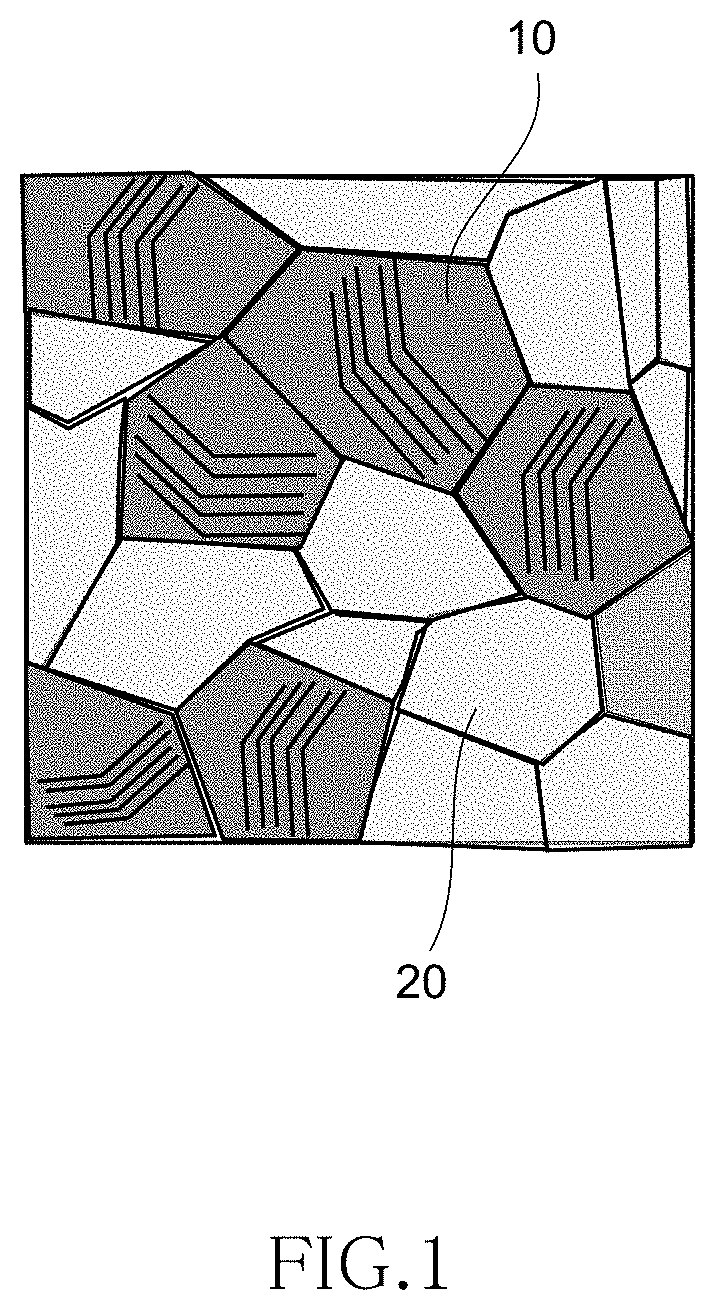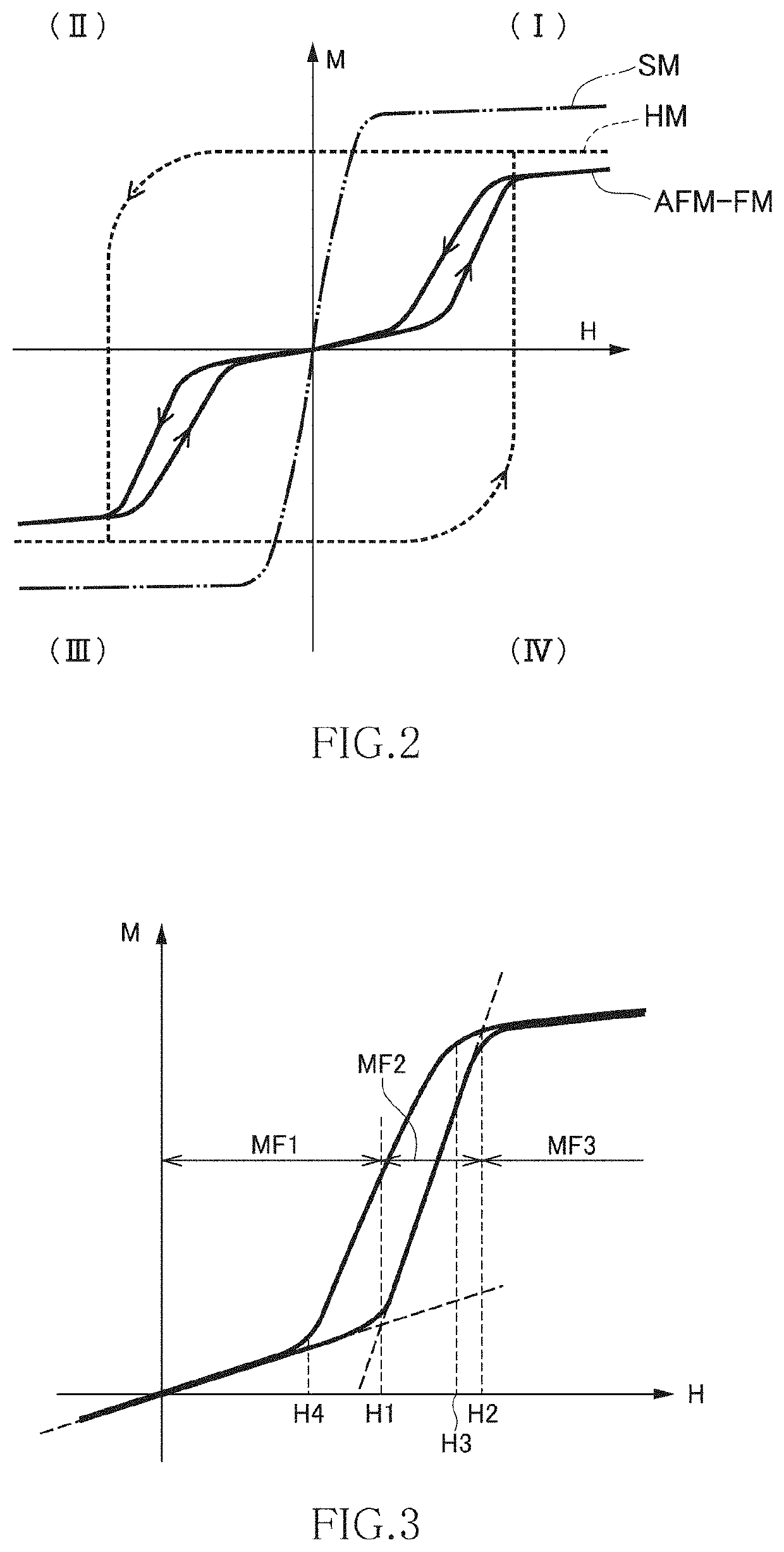MnAl alloy and manufacturing method therefor
a technology of mnal alloy and manufacturing method, which is applied in the direction of magnetic materials, inductance/transformer/magnet manufacturing, magnetic bodies, etc., can solve the problems of difficult phase transition to ferromagnetism by magnetic field, difficult to form antiferromagnetic structure, and difficult to apply metamagnetic materials to current limiters. achieve the effect of enhancing saturation magnetization, enhancing saturation magnetization, and enhancing saturation magnetization
- Summary
- Abstract
- Description
- Claims
- Application Information
AI Technical Summary
Benefits of technology
Problems solved by technology
Method used
Image
Examples
examples
[0075]First, an electrodeposition apparatus having the structure illustrated in FIG. 7 was prepared. As the cathode 5, a Cu plate having a thickness of 3 mm cut out so as to set the immersion area into the molten salt 3 to a size of 5 cm×8 cm was used. As the anode 6, an Al plate having a thickness of 3 mm cut out so as to set the immersion area into the molten salt 3 to a size of 5 cm×8 cm was used.
[0076]Then, 50 mol % anhydrous AlCl3 which is an Al compound, 50 mol % NaCl which is another halide, and 1 mass % MnCl2 dehydrated in advance as the Mn compound are weighed and thrown into the alumina crucible 2 such that the total weight thereof was 1200 g. Thus, the weight of MnCl2 was g. The dehydration was performed by heating MnCl2 hydrate at about 400° C. for four hours or longer in an inert gas atmosphere such as N2.
[0077]The alumina crucible 2 into which the materials had been thrown was moved inside the sealed vessel 1, and the materials were heated to 350° C. by the electric fu...
PUM
| Property | Measurement | Unit |
|---|---|---|
| temperature | aaaaa | aaaaa |
| temperature | aaaaa | aaaaa |
| temperature | aaaaa | aaaaa |
Abstract
Description
Claims
Application Information
 Login to View More
Login to View More - R&D
- Intellectual Property
- Life Sciences
- Materials
- Tech Scout
- Unparalleled Data Quality
- Higher Quality Content
- 60% Fewer Hallucinations
Browse by: Latest US Patents, China's latest patents, Technical Efficacy Thesaurus, Application Domain, Technology Topic, Popular Technical Reports.
© 2025 PatSnap. All rights reserved.Legal|Privacy policy|Modern Slavery Act Transparency Statement|Sitemap|About US| Contact US: help@patsnap.com



